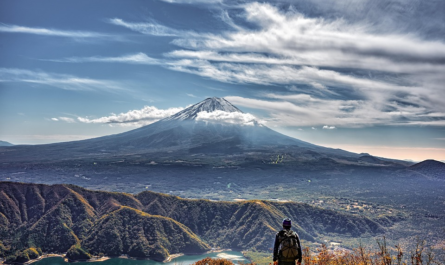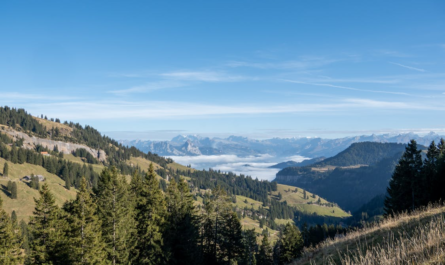Mount Rigi, often referred to as the “Queen of the Mountains,” is one of Switzerland’s most iconic peaks. Located in the heart of the Swiss Alps, this majestic mountain has attracted visitors from all walks of life for centuries. With its breathtaking views of the Swiss lakes and surrounding landscapes, it has become a must-see destination for travelers and historians alike. Over the years, many famous historical figures have journeyed to Mount Rigi, each leaving a distinct mark on the history of the mountain. In this article, we will delve into the stories of ten such individuals who were inspired by the beauty and majesty of Mount Rigi.
1. Johann Wolfgang von Goethe
One of the most significant literary figures of the 18th century, Johann Wolfgang von Goethe, made his way to Mount Rigi in 1775. Known for works like Faust and The Sorrows of Young Werther, Goethe was deeply moved by the Alpine landscapes. His visit to Mount Rigi is famously documented in his travel journal, where he describes the mountain as a place of both physical and spiritual elevation. He was particularly fascinated by the view of the surrounding lakes and the expansive vista that the summit offered.
Goethe’s writings about Mount Rigi are credited with popularizing the mountain among German-speaking travelers. His descriptions evoked a sense of wonder and awe, influencing future generations of tourists to visit the region. Goethe’s visit also solidified the idea of the mountain as a symbol of sublime beauty, forever intertwining Mount Rigi with European romanticism.
2. Queen Victoria
Queen Victoria of the United Kingdom visited Mount Rigi in 1868 during a grand European tour. She was joined by her husband, Prince Albert, and their entourage. Her visit was part of her broader fascination with the Alps, and Mount Rigi held a particular allure because of its accessibility, offering a commanding view of the surrounding Swiss lakes and peaks.
Queen Victoria’s trip to Mount Rigi was significant not only because of her royal status but also because it symbolized the rising popularity of mountain tourism among the British nobility during the 19th century. The Queen’s presence brought attention to Switzerland’s picturesque landscapes, further solidifying the Alps as a prime destination for European elites. The route she took up the mountain was eventually marked by the creation of the famous Rigi Railway, one of the world’s first cogwheel railways, making it easier for tourists to follow in her footsteps.
3. Mark Twain
The American author Mark Twain, best known for The Adventures of Huckleberry Finn, visited Mount Rigi in 1878. Twain’s witty and humorous writing style captured the essence of his journey in his book A Tramp Abroad. In his narrative, Twain humorously recounts his ascent of the mountain, highlighting the challenges of the journey as well as the awe-inspiring views at the summit.
Twain’s visit to Mount Rigi is significant because it marked a turning point in the rise of tourism in Switzerland, especially among Americans. Twain’s entertaining account of his adventure inspired countless readers to make their pilgrimage to the mountain, further cementing Mount Rigi’s status as a key tourist destination. His perspective as an outsider added a touch of light-heartedness to the mountain’s growing reputation.
4. Richard Wagner
The famed German composer Richard Wagner visited Mount Rigi in 1858. Known for his revolutionary contributions to opera, Wagner was also deeply influenced by the natural landscapes of the Alps. During his stay in the area, he composed several pieces inspired by the dramatic beauty of the mountain. Mount Rigi’s grandeur resonated with Wagner’s ideas of the sublime in art and nature, and it is believed that the mountain played a role in shaping the musical compositions he worked on during his visit.
Wagner’s visit is particularly important in understanding the relationship between music and the natural world during the 19th century. His association with Mount Rigi highlighted the mountain’s role in inspiring great works of art and culture, particularly within the context of German Romanticism.
5. Lord Byron
The renowned British poet Lord Byron, a central figure in the Romantic movement, is said to have visited Mount Rigi during his travels across Europe. Although the specifics of his visit remain somewhat unclear, it is widely believed that Byron was deeply affected by the stunning views from the summit of Mount Rigi. His poetic works often explore themes of nature’s power, beauty, and grandeur—elements that are vividly present in the alpine landscapes of Switzerland.
Byron’s potential visit to Mount Rigi further cemented the mountain’s reputation as a site of great literary inspiration. His works, filled with passionate expressions of nature’s grandeur, resonated with the mountain’s mystique and contributed to the burgeoning myth of Mount Rigi as a muse for artists, writers, and thinkers.
6. Charles Dickens
The famous English novelist Charles Dickens, known for works such as A Tale of Two Cities and Oliver Twist, also visited Mount Rigi during his European travels. Dickens was captivated by the majestic views from the summit and often found inspiration in the quiet, awe-inspiring landscapes he encountered. His descriptions of Switzerland in his travel writings express admiration for the natural beauty of the region, and his visit to Mount Rigi likely contributed to his appreciation of the Swiss Alps.
Though Dickens did not write extensively about Mount Rigi, his visit highlighted the growing trend of English writers and intellectuals making pilgrimages to the mountain. His presence further solidified the image of Mount Rigi as a destination that attracted the literary elite of the time.
7. Lord Lytton
Lord Lytton, a British politician, diplomat, and author, was another notable figure who visited Mount Rigi in the mid-19th century. His travels through Europe were well-documented, and his accounts of his time in Switzerland often featured descriptions of the majestic mountain ranges. Lytton’s writings on Mount Rigi contributed to the rise of the Swiss Alps as a popular destination for English tourists, especially among the nobility and intellectual circles.
Lytton’s visit helped shape the cultural image of Switzerland as a pristine, untouched paradise, fostering a sense of wonder among those who came after him. His reflections on the mountain reinforced the idea that Mount Rigi was a site of profound beauty and inspiration.
8. Jean-Jacques Rousseau
While the Swiss philosopher Jean-Jacques Rousseau is not known to have visited Mount Rigi specifically, he spent much time in the Swiss Alps during the 18th century. Rousseau’s writings on nature and the human connection to it were revolutionary for the time and contributed significantly to the Romantic movement. His philosophical ideas regarding the sublime nature of the Alps influenced many travelers, including those who later visited Mount Rigi.
Rousseau’s works, particularly The Reveries of the Solitary Walker, promoted the idea of retreating to nature for solace and contemplation. Although he may not have set foot on Mount Rigi, his influence on the Romantic ideal of nature as a spiritual refuge helped draw countless visitors to the Swiss Alps, where Mount Rigi stood as one of the foremost attractions.
9. Hans Christian Andersen
The Danish author Hans Christian Andersen, famous for his fairy tales, made a journey to Switzerland in the 19th century, where he was captivated by the scenery of the Swiss Alps. While there is no definitive record of Andersen’s visit to Mount Rigi, he did express his admiration for the Swiss landscapes in his letters and travel writings. Andersen’s accounts often describe his awe at the natural beauty of the region, and, likely, Mount Rigi featured prominently in his experiences.
Andersen’s fairy tales, often imbued with themes of nature, transformation, and beauty, resonated with the Alpine environment. His indirect influence on the mountain, through his celebrated connection with nature, likely encouraged future generations of visitors to explore the region’s sublime landscapes.
10. Albert Einstein
Albert Einstein, one of the greatest scientific minds in history, visited Switzerland numerous times, particularly during his time at the Swiss Federal Institute of Technology. Though more associated with cities like Zurich, Einstein’s love for the Swiss Alps is well documented. He was known to frequent the region for hiking and leisure, and the spectacular views from Mount Rigi are believed to have left an impression on him.
Einstein’s visit to Mount Rigi is a more modern reflection of the mountain’s continued allure. His connection to the mountain, however indirect, reinforces the idea of Mount Rigi as a place where people from all walks of life—whether artists, scientists, or intellectuals—could find inspiration.
Mount Rigi’s reputation as a site of natural beauty and inspiration has endured for centuries. From literary giants like Goethe and Twain to scientific minds like Einstein, the mountain has left an indelible mark on those who visit it. The experiences of these famous historical figures reflect the timeless allure of Mount Rigi and its profound impact on art, literature, science, and culture. As tourism continues to thrive in the region, Mount Rigi remains a symbol of Switzerland’s grandeur, offering visitors a chance to walk in the footsteps of those who were inspired by its majestic landscapes.



